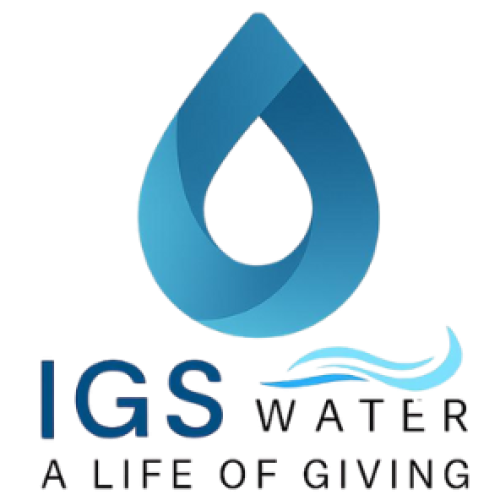Across industries—from aquaculture and agriculture to lakes, ponds, and wastewater systems—advanced aeration is rapidly becoming the new standard for improving water quality. Traditional methods like surface aerators, paddlewheels, or basic diffusers are no longer enough to address today’s rising environmental challenges. As water systems become more stressed by pollution, temperature changes, and increased nutrient loads, the need for smarter, more efficient aeration technology has never been greater.
This shift is driven by several factors: higher efficiency demands, sustainability requirements, improved science, and the growing awareness that oxygen is the foundation of a healthy water ecosystem. Modern systems like IGS Water’s nanobubble and destratification technology are transforming the way facilities manage water—making treatment faster, more reliable, and more cost-effective.
Below are the key reasons why advanced aeration is setting the new standard.
1. Water Systems Today Require More Oxygen Than Before
Natural water bodies used to maintain healthy oxygen levels through wind, rain, and regular circulation. But due to rising temperatures, nutrient overload, and increased agricultural and industrial activity, oxygen levels drop faster than they can recover. Traditional aerators often cannot deliver oxygen deep into the water column.
Advanced aeration solves this by delivering dissolved oxygen where it’s needed most: at the deeper layers of water where stagnation and anaerobic bacteria thrive. This creates balanced conditions, reduces harmful gases, and stabilizes the entire system.
2. Nanobubbles Offer Superior Oxygen Transfer Efficiency
One of the biggest drawbacks of old aeration methods is low oxygen transfer efficiency. Large bubbles escape to the surface before they dissolve, wasting energy and reducing performance.
Modern aeration—especially pure nanobubble technology—changes everything.
Nanobubbles:
• stay suspended in water for long periods
• penetrate deep into the water column
• provide up to 80x more surface area compared to normal bubbles
• dissolve oxygen more effectively
• do not rise quickly or burst at the surface
The result is higher oxygen concentration using less energy—and more stable water chemistry overall.
3. Advanced Aeration Reduces Reliance on Chemicals
Many facilities have relied on algaecides, chlorine, and other chemical treatments to manage algae blooms, odors, or water clarity issues. However, constant chemical use leads to long-term damage, higher costs, and environmental concerns.
Advanced aeration addresses the root cause instead of treating symptoms. By restoring oxygen and promoting healthy microbial activity, water naturally becomes clearer, cleaner, and more stable. This reduces or eliminates the need for:
• chemical flocculants
• algaecides
• odor-control chemicals
• sludge reduction agents
A more natural, oxygen-balanced system means long-term sustainability.
4. Energy Efficiency Is No Longer Optional
Energy consumption is one of the biggest operating costs in water treatment systems. Traditional aeration is known for high electricity usage and mechanical wear and tear.
In contrast, advanced aeration technologies are engineered for efficiency:
• fewer moving parts
• lower maintenance
• optimized oxygen delivery
• reduced power consumption
• longer operational lifespan
Systems like IGS Water’s nanobubble generators and destratification systems can drastically reduce energy use while improving treatment performance.
5. Solving Complex Problems Requires Smarter Solutions
Today’s water problems are more diverse and severe:
• harmful algal blooms
• sludge accumulation
• foul odors
• low dissolved oxygen
• poor circulation
• stratification during warm seasons
Traditional surface aeration often treats only the top layer of water, ignoring deeper issues.
Advanced aeration systems move beyond surface oxygenation by:
• breaking temperature layers
• improving circulation throughout the water body
• increasing microbial efficiency
• reducing anaerobic zones
• preventing algae formation before it starts
This comprehensive approach leads to a healthier, cleaner water environment with long-term stability.
6. Industries Are Demanding Reliable, Low-Maintenance Systems
Whether it’s aquaculture farms, wastewater facilities, or golf course lakes, operators now prioritize equipment that can run continuously without constant repairs. Older systems often clog, require frequent servicing, or break down due to heavy solid loads.
IGS Water’s advanced aeration technologies are engineered to operate without clogging, even in high-solid environments. This ensures consistent performance, reduced downtime, and lower total operating costs.
7. Supporting Sustainability and Environmental Compliance
Environmental regulations are becoming stricter. Facilities must now prove that their practices do not harm surrounding ecosystems. Advanced aeration systems contribute directly to sustainable operations by:
• reducing carbon footprint
• supporting natural water restoration
• minimizing chemical discharge
• improving water clarity and oxygenation
• enhancing aquatic life health
This aligns with global sustainability goals and helps facilities meet environmental standards easily.
Why IGS Water Leads the Shift Toward Advanced Aeration
IGS Water provides next-generation solutions using:
• pure nanobubble technology
• high-efficiency destratification systems
• energy-saving circulation technology
• non-clogging water conditioners
Our systems are engineered to deliver long-term, measurable improvements in water quality. We help clients across ponds, aquaculture, wastewater, agriculture, and industrial applications achieve healthier, stable water systems without high costs or complex maintenance.
Advanced aeration isn’t just a trend—it’s becoming the new standard because it works better, lasts longer, and supports sustainable water management.
At IGS Water, we continue to lead this transformation by offering solutions designed for real-world challenges and long-term success.

